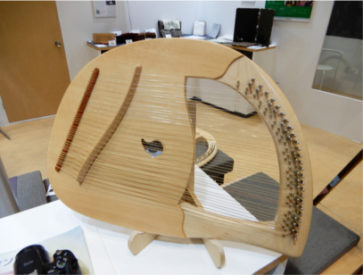- Series:God’s Design, Transcript English
Psalm 33:2
“Praise the LORD with harp: sing unto him with the psaltery and an instrument of ten strings.”
 There is a strong link between physics and music. Usually, the best way to understand sound is to see how musical instruments work. Consider, for example, how stringed instruments make music by vibration.
There is a strong link between physics and music. Usually, the best way to understand sound is to see how musical instruments work. Consider, for example, how stringed instruments make music by vibration.
A guitar has six strings, all of which are the same length. However, a number of factors affect the sound. The pitch of the sound can be affected in a number of ways. If more tension is put into the string, by tightening the machine head, then the pitch goes up. The strings are usually different thicknesses. If all six strings are tightened to the same tension, then the one with the greater thickness will have the lowest pitch.
The pitch can be defined in terms of the frequency of the string vibrations. Frequency means how many times the string vibrates in a second. The greater the frequency, the higher the pitch.
How loud the sound is is related to the “height” of the sound wave – called the amplitude. A greater amplitude indicates a louder sound.
So there is a great deal of Math and Physics involved in the study of music. But no amount of scientific research can explain why, for example, Beethoven chose to put the various notes, of different pitch and timbre, together in a work like his 9th Symphony. That creativity is possible only because humans are made in the image of God, and we reflect His creativity when we exercise ours.
Prayer: We thank You for the order You created and all the scientific laws. We thank You also for art and beauty, and how these thinks work together in Your wonderful creation. Amen.
Author: Paul F. Taylor
Ref: Salters Horners Advanced Physics (London: Heinemann: 2000), pp. 119-175. Image: A modern lyre, Public Domain Image.
© 2019 Creation Moments All rights reserved.
